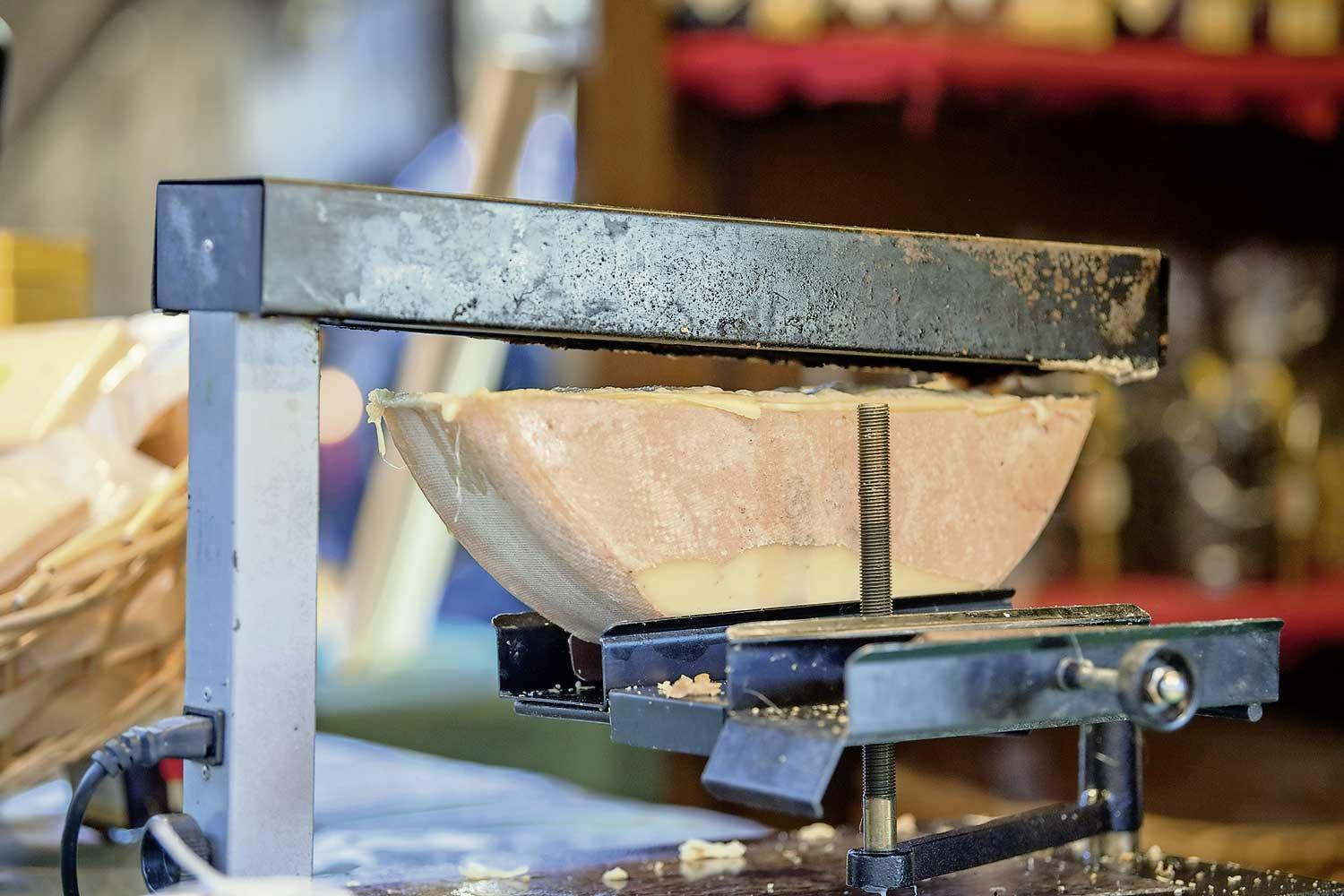Expat adventures
27.12.2018 LifestyleFondue
Fondues became popular in the UK during the 1970s. How authentic they were is anyone’s guess (hint: I bet English Cheddar was involved somehow, somewhere), so when we moved to Gstaad we quizzed our new Swiss friends about making a good fondue. What percentage Vacherin to Gruyère? With or without garlic? Armed with helpful advice, we would buy and grate the cheeses from scratch ourselves.
That is until we discovered that the local Laiteries (and cheese counters in larger shops) will blend you a superlative fondue mix there and then. It cuts out the tedious chopping and grating and tastes superb. And not a cube of Cheddar in sight.
Raclette
Raclette, on the other hand, was a new dish to us and we quickly became fans.
I ate my first at the Bären in Gsteig. It was very theatrical. We sat in the downstairs Stübli facing a massive open fire. As each new order came in, the chef would select a cheese from the stack of half-moons by his side, slide it towards the fire, wait a few seconds then pick it up with his bare hands and scrape the top layer of melted cheese onto a waiting hot plate. I never saw him flinch from the heat. It was marvellous. We decided this was a dish we should eat at home.
We sensibly decided not to cook in our fireplace and instead bought a machine to do the work. It had a long metal arm at the end of which you clamped a half-moon cheese like the ones we’d seen at the Bären. To heat the cheese you simply bent the arm until it was directly under the grill section. When it began to bubble you’d push the arm away from the heat, angle the cheese down and scrape off the top layer with a smooth, sweeping motion. It was great fun at first. Not quite as theatrical as the open-fire, but still not bad. By unspoken consent my husband became raclette master and he’d serve plate after plate with great flourish.
Speed eating
In time I came to dread this machine. Why? Because every time we bought a raclette cheese, we were signing up for ten days of near constant cheese eating. We learned raclette cheese doesn’t keep well, quickly becoming pungent and unpleasantly salty. The only solution was to eat it before it became over-ripe. And as our machine took such huge blocks of cheese, this involved a lot of eating in a short amount of time.
So began the all-too familiar routine. We’d eat the first raclette with gusto,
wait a couple of days then have a second. After the fifth or sixth raclette we’d still be left with a rather large chunk of cheese, though now too small for the machine. Rather than waste it, we tried it on toast, melted in pasta and in cauliflower cheese. They were all disgusting. We learned the hard way that raclette cheese is really only good to be served as ... raclette.
Lessons learned
These days we use a raclette grill with mini frying pans where everyone melts their own pre-sliced squares of cheese. It’s not as theatrical, but when you’ve had enough at least you don’t leave the table knowing you’ll be eating the same thing for the next two weeks.
Our once prized raclette machine now sits abandoned in a kitchen cupboard. Perhaps we should give it to my friend’s cheese-hating-raclette-loving son?
ANNA CHARLES




